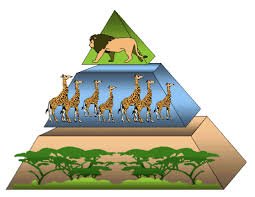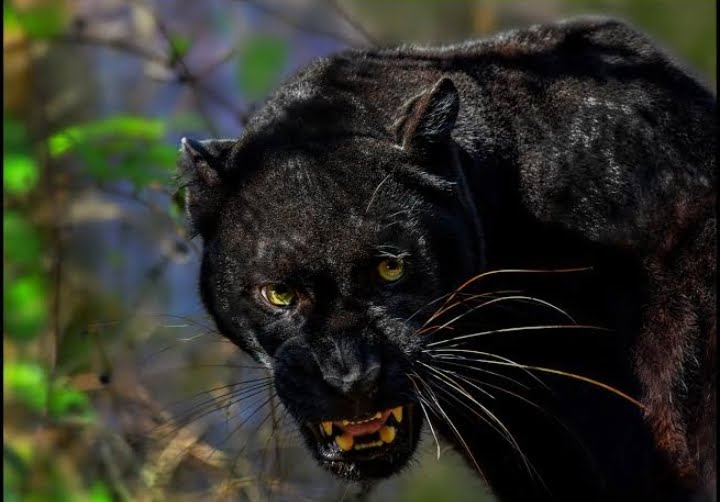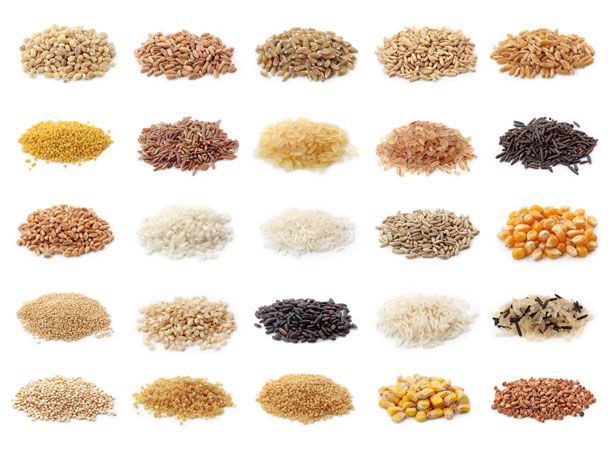Dragonflies predated dinosaurs by over 100 million years. However, we are lucky that today’s dragonflies are smaller than they were in the past. We refer to these little insects as “dragonflies” because of two reasons. For starters, because of their ferocious teeth, which they utilize to snag flying food. Secondly, because of their speed, they can reach up to 60mph. It is also for this reason that they are called the world’s fastest insects. This planet is home to around 5000 different species of dragonflies.
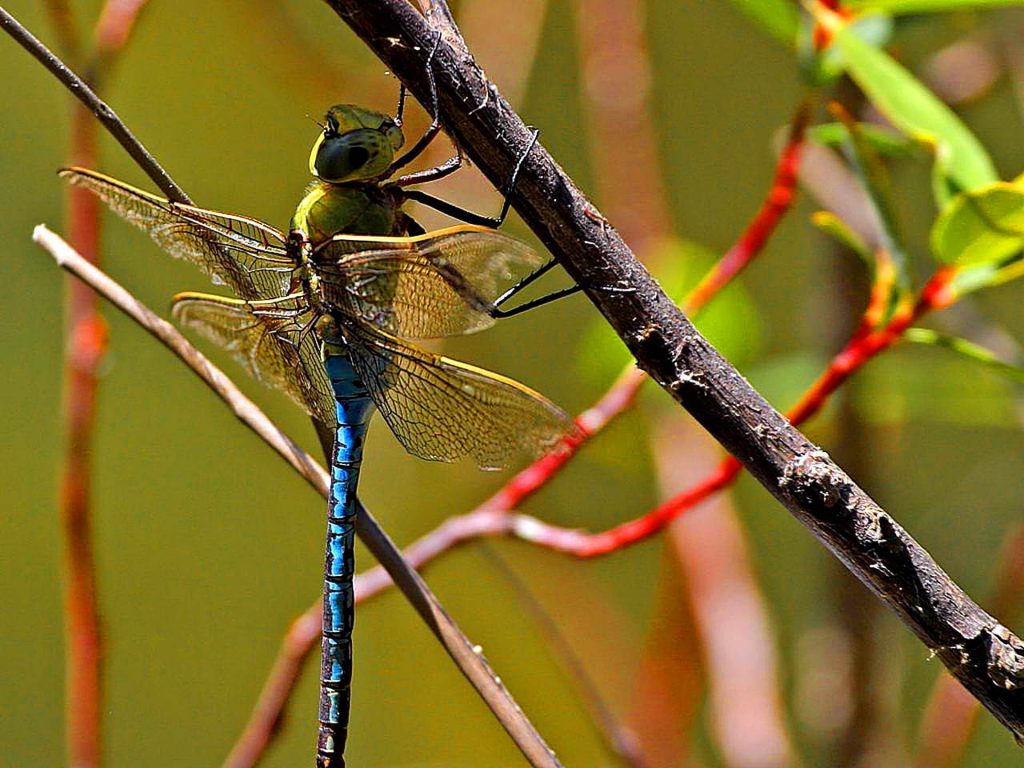
Dragonfly and its Importance
A dragonfly is a kind of flying insect in the Odonata order. An adult dragonfly has a pair of huge, It is a member of the kingdom Animalia’s phylum Arthropoda. It is a member of the kingdom Animalia’s phylum Arthropoda . A dragonfly comes in a variety of colours such as yellow, red, brown, and blue. Sometimes, even the wings have brown spots and bands.
How do dragonflies benefit the environment?
Dragonflies play an important role in insect population management, particularly mosquitoes and agricultural pests. Aside from that, dragonflies play an important ecological role in that they serve as prey for frogs, birds, and other animals. Moreover, these insects require stable oxygen levels and clean water, and for this reason, scientists consider them as reliable bioindicators of the health of an ecosystem.
Habitat of a Dragonfly
Dragonflies are commonly found near bodies of water such as ponds, ditches, lakes, or rivers since these are ideal areas for them to lay eggs. Immature dragonflies are most in number and diverse in slow-moving freshwaters devoid of fish. They may, however, be found in a variety of shallow freshwater settings. Adult dragonflies like to stay near water, although they will occasionally fly out to hunt or migrate. Because they are quick flyers, they prefer to hunt in open regions rather than places densely forested with trees or other plants.
Types of Dragonflies
A number of unique dragonflies roam the Earth. They, together with damselflies, constitute the Odonata order of flying insects. We have identified six of the most common but stunning dragonflies in the section below.
Clubtail Dragonfly
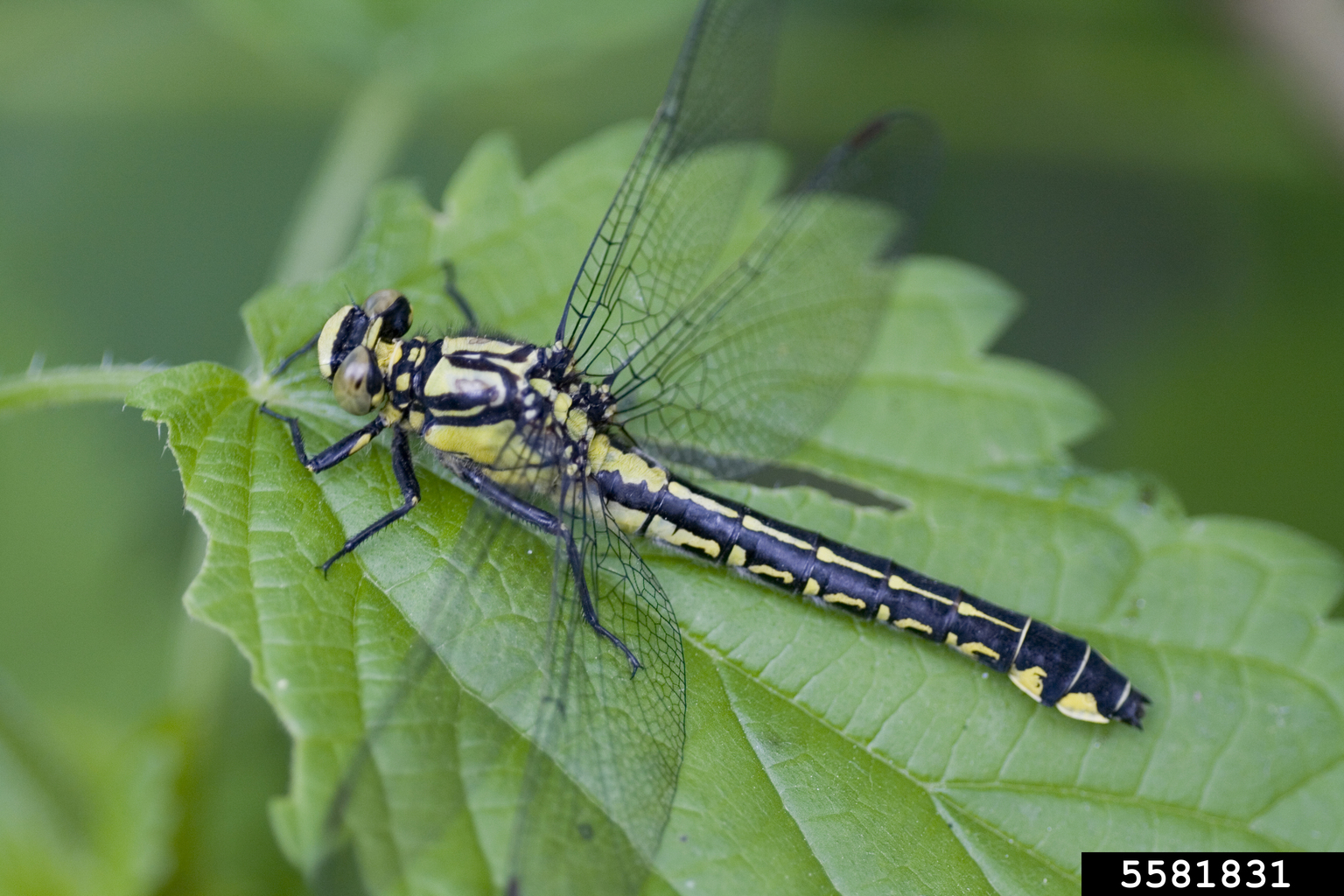
The Gomphidae are a group of dragonflies known as club-tailed dragonflies. There are about 900 different species in the family. Their characteristic feature is the club-like expansion of their abdomen’s end (abdominal segments 7 through 9). This club, however, is generally less prominent in females. Clubtails have complex eyes that are small and wide apart, similar to Petaluridae and damselflies. Blue, turquoise, or green eyes are common. The majority of species have a pale thorax with black characteristic stripes. The majority of clubtails reproduce in rivers, streams, or lakes. The nymphs are distinct in that they have a flat mentum that is part of their mouthparts and just four segments on their antennae.
River Cruiser Dragonfly

River cruisers are bigger and more metallic than stream cruisers. The blackish royal river cruiser is the biggest river cruiser, ranging in length from 3.0 to 3.6 inches. Frontal golden stripes run over their thorax halfway through. Dorsally, their abdomen features little yellow dots. Although not clubbed, the male abdomen broadens near the end. Except for the abdomen, the female resembles the male in all other aspects.
These dragonflies reside in clean rivers, streams, and lakes across the eastern and southern United States. They favour medium to large sloughs and, on occasion, the main channel in places with forested or rocky shorelines.
Skimmer Dragonfly
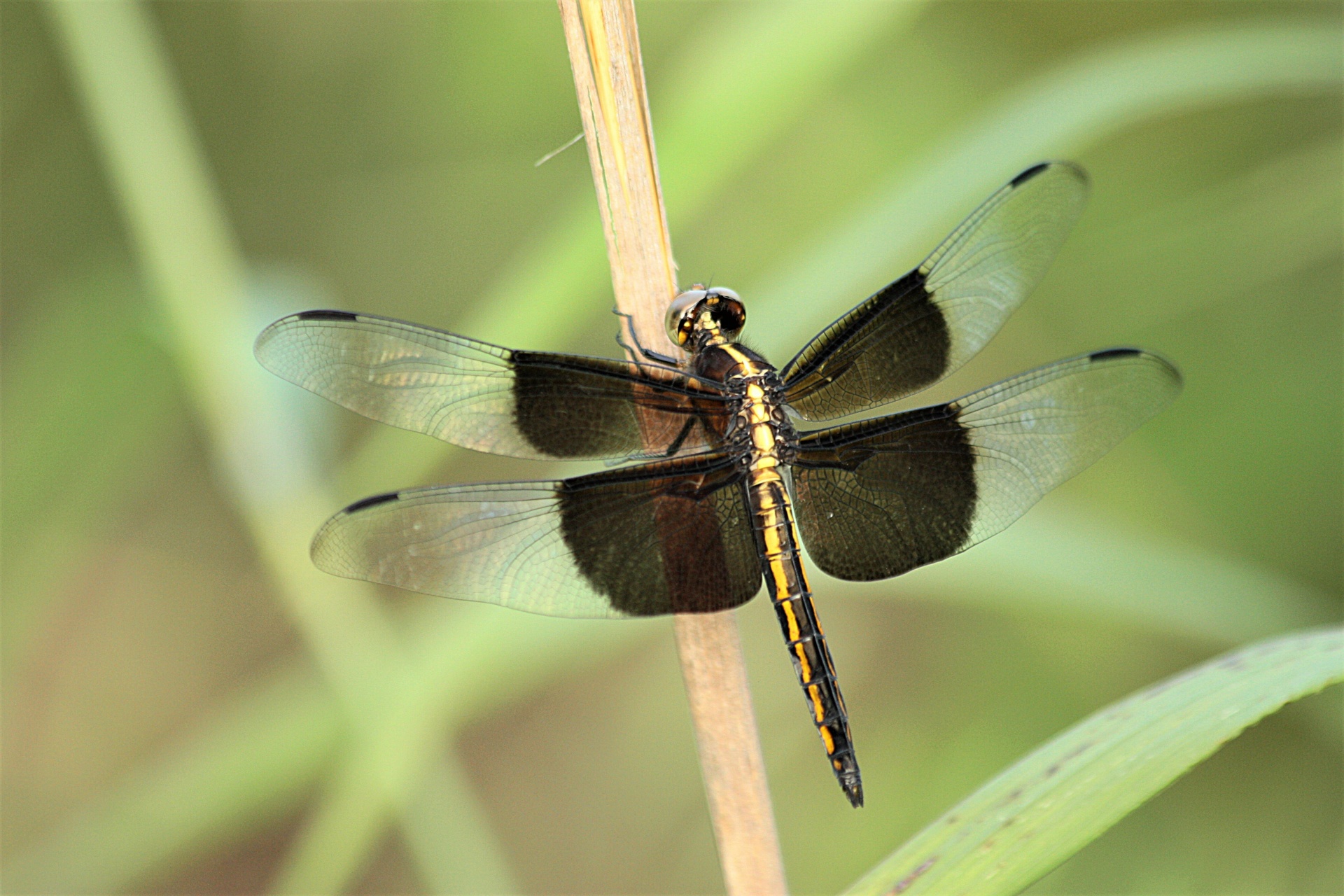
Johan Christian Fabricius described Pantala flavescens, or the global skimmer dragonfly, in 1798. It is the most common dragonfly on the globe, spread over every continent except Antarctica, albeit it is rare in Europe. Individual globe skimmers travel more than 6,000 km to complete their yearly intergenerational migration of over 18,000 km, one of the farthest known migrations of any insect species.
The dragonfly may grow to be up to 4.5 cm long, with a wingspan ranging from 7.2 cm to 8.4 cm.
Their head is yellowish to reddish in colour, and their thorax is yellow to golden in colour, with a black hairy line going down the centre. However, there are some individuals with olive or brown thoraxes. Their abdomen is the same colour as the thorax. They have transparent wings that are wide at the base. However, wandering gliders with black wings are present on Easter Island.
Spiketail Dragonfly
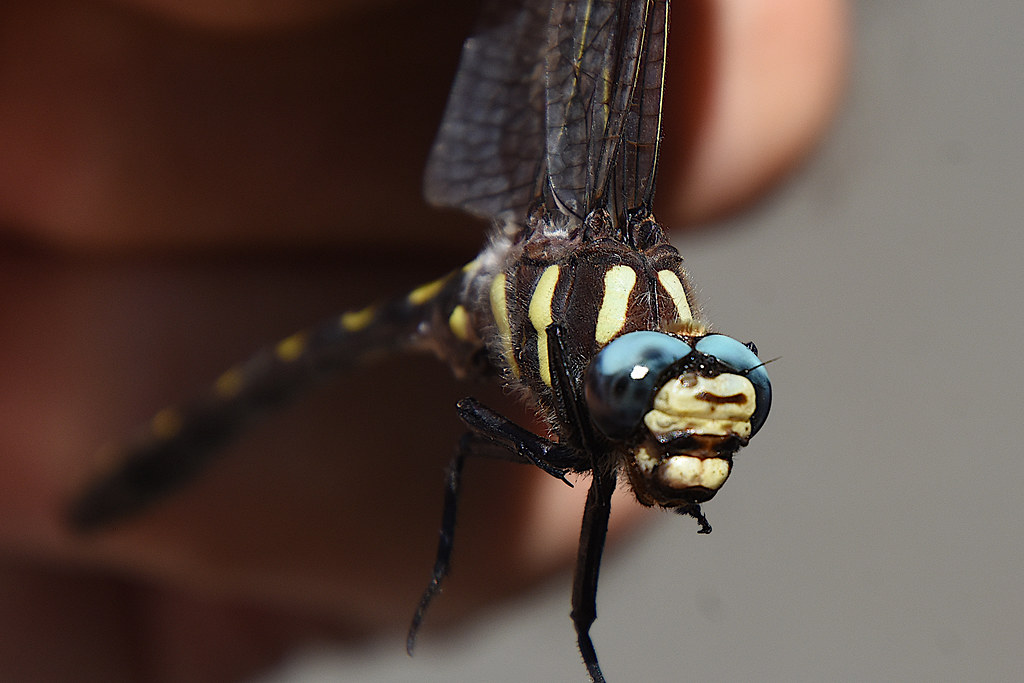
Spiketails are a subfamily of the Cordulegastridae. Other common names for members of this family are biddie and flying adder. Their bodies are huge, dark or black, with yellow patterns, and their wings are slender and unpatterned. Spiketail usually gently fly 30 to 70 cm above the water in tiny, clear forest streams. However, when they are agitated, they can fly quite fast. They prefer to hunt high in the forest vegetation, catching anything that is resting on leaves or branches. The Cordulegastridae often deposit their eggs on the sand in shallow water, with the female hovering just above the water in a vertical stance and making repetitive dips into the water with her abdomen to do so.
Petaltail Dragonfly
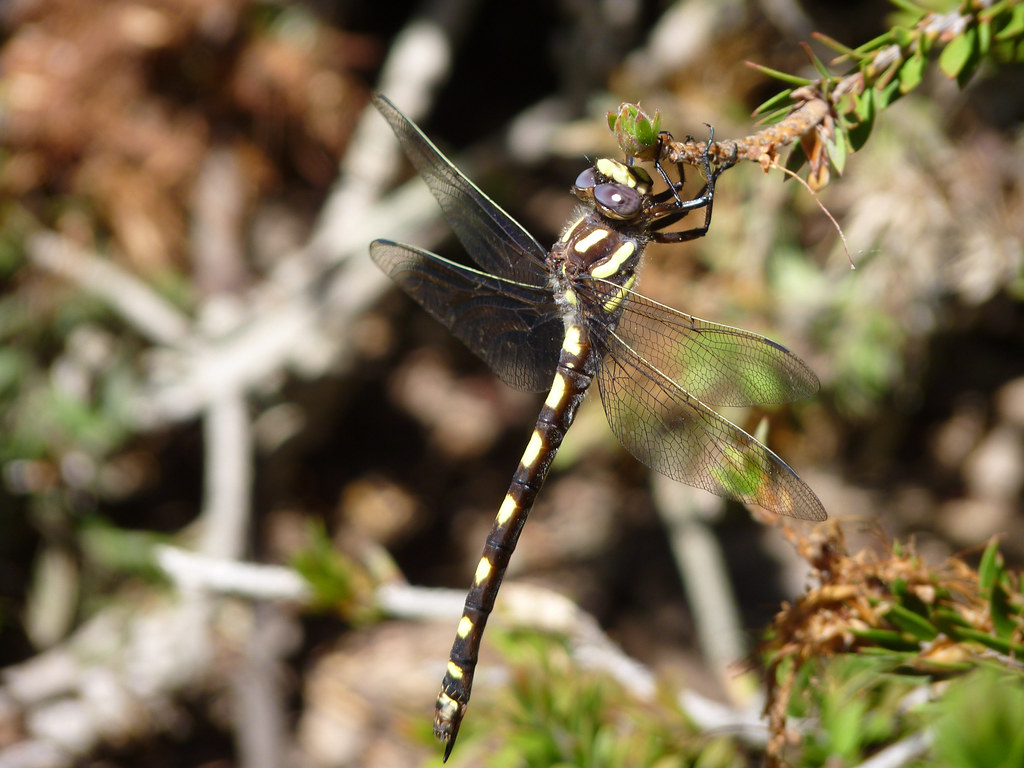
Petaltails appear to be the oldest ancient of the current genuine dragonflies with fossil members dating back to the Jurassic period (over 150 million years ago). There are only 11 species of modern Petalurids, one of which, the Australian Petalura ingentissima, is the biggest dragonfly, with a wingspan of up to 160 mm and a body length of more than 100 mm. Another common species found in Australia is the Petalura Gigantea, referred to as “giant dragonfly”. This family consists of five genera, namely, Phenes, Petalura, Tachopteryx, Uropetala and Tanypteryx. Petaltail dragonflies get their name from the shape of their tails, which are long and straight like petals.
Hawkers (Ashnidae)
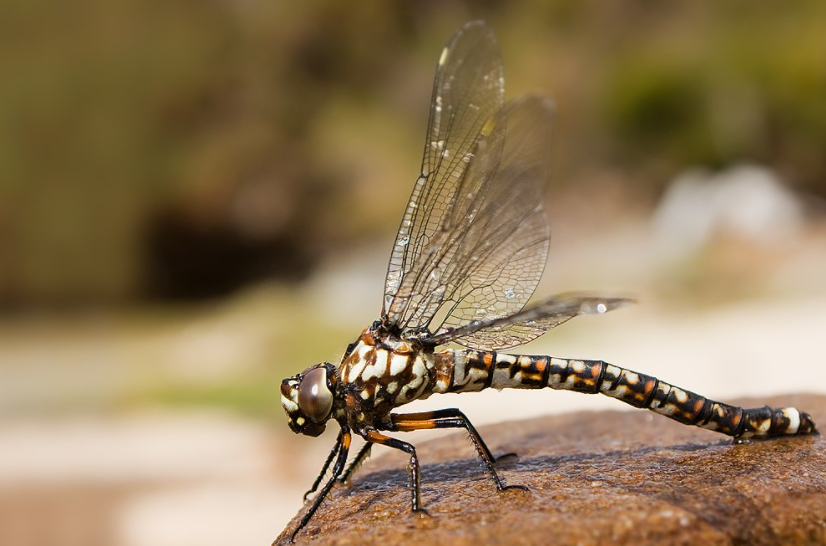
The Aeshnidae family of dragonflies comprises the biggest dragonflies found in North America and Europe. This family includes over 41 species from 11 genera. The abdomens of the female Ashenids resemble a sewing needle since they cut into plant stems as they lay their eggs through the ovipositor. In comparison to other families, the larvae are relatively thin, having a long and flat extendable lower lip.
The adults spend a lot of time in the air and appear to fly all the time with their four enormous and strong wings. They have the ability to fly forward, backward, or hover like a helicopter. The wings are usually horizontally extended. Furthermore, their stomachs are long and slender. Their huge, hemispherical compound eyes completely envelop their head and almost touch in the middle. Thus, they have excellent vision and are ferocious bug hunters.
Lifecycle of a Dragonfly

There are three stages in the life cycle of a dragonfly, so let’s go through each of them one by one.
Stage 1: Eggs
Female dragonflies have the ability to produce hundreds of eggs in and near water. Depending on where they are laid, the form and coating of the eggs differ. Firstly, there are the endophytic eggs, which are laid on plants that are long and elongated. Exophytic eggs, on the other hand, are spherical in shape and are suspended in a jelly-like material in water. In the case of emerald damselflies, some darters, and hawkers, these eggs hatch in 2–5 weeks, or the next spring.
Stage 2: Larva
In seven to fourteen days, a small tadpole-like prolarva emerges from the egg. The prolarva seeks and eats live prey often during this stage, moulting 5–14 times before reaching full size. An Instar is a stage that occurs between each moult. Larval development typically takes one to two years, although it can take as short as two months (in the case of emerald damselflies) or as long as five years (in the case of Golden-ringed Dragonfly). When a dragonfly’s larval stage is through, it crawls out of the water. The insect’s exoskeleton then cracks open, revealing its abdomen. Finally, the dragonflies’ four wings emerge, dry and solidify over hours or even days.
Stage 3: Adult
Dragonflies do not go through a pupal stage and instead proceed straight from larva to adult. This process, known as the last larval moult, occurs outside of the water. The metamorphosis is driven by temperature and day length. However, it is coordinated in other species, such as the Emperor Dragonfly. Adult dragonflies typically survive for a few weeks, with a few exceptions living for up to a year.
What do dragonflies eat?
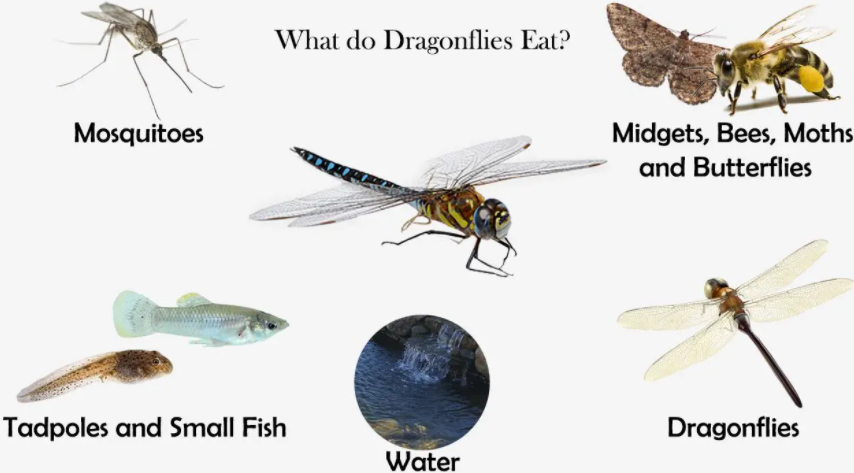
Both the aquatic larvae and the flying adults are some of the largest and most aggressive insect hunters in the world. Dragonfly nymphs live in water and usually hang out on aquatic foliage, waiting for their target prey. Their prey can be any animal that is smaller than them. When the prey comes close enough, the larva unrolls its labium to grab it.
The adult dragonflies eat almost any insect that they can easily catch. The main insects that they eat include mosquitoes and midges. Furthermore, they eat on moths, butterflies, bees, and at times, even their own kind. Every day, larger dragonflies consume their own body weight in insects.
Damselflies Versus Dragonflies
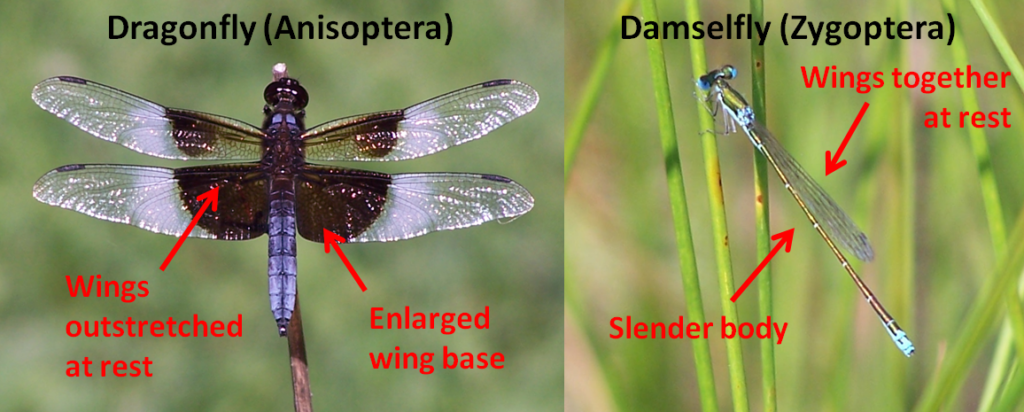
Damselflies are winged insects that belong to the order Odonata’s suborder Zygoptera. They are closely related to dragonflies, which belong to the other odonatan suborder, Anisoptera. Damselflies, are smaller and have thinner bodies. When taking a pause from flying, most members of the species fold their wings along their body, with the exception of dragonflies, which hold their wings flat and away from the body.
Dragonflies’ eyes are significantly larger than damselflies’. A dragonfly’s eyes take up the majority of the insect’s skull, hanging over to the sides of its head. Damselflies, on the other hand, have large eyes, but they are smaller than those of dragonflies. Furthermore, there is usually a gap between their eyes. Furthermore, dragonflies and damselflies are both located near freshwater and are frequently observed on warm, bright, and sunny days. Although both insects have certain morphological and biological qualities, they are not so similar that they cannot be distinguished.
Spiritual Significance of a Dragonfly
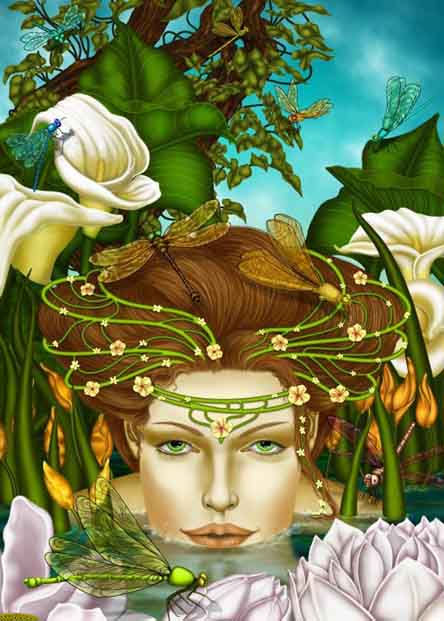
Dragonflies symbolize many things, and like with most symbols, the meaning and interpretation depend on the interpreter’s personal beliefs. In ancient societies, the importance of a dragonfly was understood in a number of ways. In fact, the Cherokee Indians believed that dragonflies brought good luck.
However, in other cultures, dragonflies signify transition, modification, change, and self-realization. People believe that these insects teach us to cherish life, celebrate, and have hope even amidst difficulties. Furthermore, dragonflies inspire people to live their lives in a way that leads to brightness and joy.
By simply observing a dragonfly sail through the air, it is not difficult to understand why they have long been a part of mythology. In many mythological stories, dragonflies symbolize a new beginning. Furthermore, they are a sign for people to alter their outlook on life, just as the colours of their wings change when they fly in the sunshine.
Important Facts and Features About a Dragonfly
Dragonflies are magnificent creatures with several unknown and interesting facts and features. We have listed some of them below:
- Dragonflies have extraordinary eyesight, probably better than any other insect. With such great vision, their eyes are capable of encompassing almost every angle around them. On the other hand, they have a very bad sense of aroma and hearing. They rely on their vision to catch their prey, find their spouses, and protect their territories. Therefore, colours are of vital importance to dragonflies.
- Dragonflies evolved around 300 million years ago. While modern dragonflies have a wingspan of two to five inches, prehistoric dragonflies had wingspans of up to two feet.
- There are some propounded theories according to some scientists which state that in the Paleozoic era, there was a lot of oxygen in the environment, which made the dragonflies humungous in size.
- There are around 5,000 species of dragonflies known to man. All of these dragonflies are members of the order Odonata, which translates to “toothed one” in Greek. It refers to the serrated teeth of the dragonfly.
- According to one Harvard University research, dragonflies are exceptionally proficient hunters, who were able to catch around 90 to 95 percent of the prey placed into their enclosure.
- Based on research findings, one dragonfly can consume anywhere from thirty to a hundred mosquitoes every day.
Facts regarding flight and migration
- Dragonflies are expert fliers who can fly straight up and down. They can hover like a helicopter and even mate mid-air. In fact, if they don’t fly then they’ll possibly die because of starvation, as they only get to eat the prey that they catch while flying in the sky.
- These insects are extremely athletic. Most dragonflies fly an average of 10 miles per hour, but larger species can top out at 30 miles per hour.
- The great flights of the dragonfly are very significant and they have inspired several engineers, who today, dream of making robots that can take flight like a dragonfly.
- Dragonflies gather in groups of hundreds and can move either for feeding or migration. Their groups can consist of different species as well. Very less information has been gathered till date about this behavior of the dragonflies, and further research is still in progress.
- For a long time, scientists have been studying the migratory patterns of dragonflies all across the world. To observe their migratory pattern, scientists attach tiny transmitters in the wings of the dragonflies using a combination of eyelash adhesive and superglue. Using similar research, scientists discovered that green darners from New Jersey travelled every third day and averaged 7.5 kilometres per day. Dragonflies are also called globe skimmers as they have the largest migratory path of any insect, travelling 11,000 miles back and forth across the Indian Ocean.
34 DRAGONFLIES OF INDIA — A FIELD GUIDE – Download
FAQs
Is it a good sign when dragonflies land on you?
In case, a dragonfly suddenly lands on you, it means that maybe good luck is coming to you. However, if you see a dragonfly in your dreams or if a dragonfly appears in your way then it can be a sign of caution for you.
Do Dragonflies symbolize death?
If you go by the facts and the historical theories, then dragonflies have been associated with death on many occasions. The dragonfly is generally portrayed as either a positive messenger to loved ones, or it can be the manifestation of the soul in the spirit world.
Is a dragonfly a visitor from heaven?
It is widely believed that the visits of dragonflies symbolise a deceased loved one or a guardian angel. These visits are believed to be a visual reminder that your loved ones are always near you. Many people even believe that if you are having some kind of contact with a dragonfly, then you may develop a spiritual connection with the afterlife as well.
Which is the most rare dragonfly?
The Hine’s emerald dragonfly is said to be the rarest dragonfly, which is also an endangered species. This dragonfly is found in Illinois, Missouri, Michigan and Wisconsin. The adult dragonflies lay their eggs in small streams in fens and sedge meadows.
Which is the biggest Dragonfly of all?
Amongst all the types of dragonflies in the United States, it is the giant darner dragonfly which is considered to be the largest. It is five inches (13 centimetres) long with a five-inch wingspan. Its abdomen has a slight downward curve and is covered in large, bright, metallic blue spots. These features differentiate it from other dragonflies.
In prehistoric times, dragonflies were much larger and were the largest flying insects ever. The largest member of the extinct Protodonata was the Meganeuropsis permiana, which has a reconstructed wingspan of about 70 to 75 cm.
How to differentiate between a male dragonfly and a female one?
In order to distinguish between a male and a female dragonfly, you have to look after the dragonfly that you have in your net or your hand or maybe a photo that is very clear. You have to look very carefully for a bump on the underside of the abdomen near its joint with the thorax. If there’s a bump then it is a male for sure. However, if the underside of the dragonfly is smooth, it’s a female.
What are some nicknames of a dragonfly?
A dragonfly has a variety of nicknames assigned by people. They are popularly known as snake doctor, devil’s darning needle, skeeter hawk, spindle, snake eyes, and ear sewer.
What enemies do Dragonflies have?
The species that catch and eat adult dragonflies and damselflies include birds like Wagtails and Hobbies, spiders, frogs, and other larger species of dragonflies. In the larval stage, which is spent underwater, they are preyed on by frogs, fish, toads, newts and other aquatic invertebrates.
Do Dragonflies have feelers?
Yes, dragonflies do have a pair of antennae. However, they are very tiny and difficult to see. As dragonflies rely much more on their eyesight than their sense of touch or smell, they do not need the large antennae found on some beetles and moths.
Where can I go to view dragonflies?
Dragonflies are drawn to water, therefore the ideal location to start is a nearby lake, pond or river that is quite clean. If you have a nature reserve with a body of water nearby, that is likely to be an excellent area to visit.
Share with your friends

